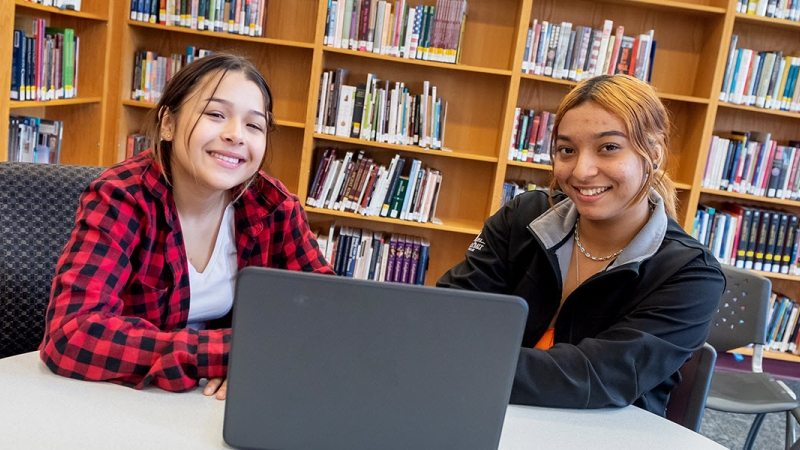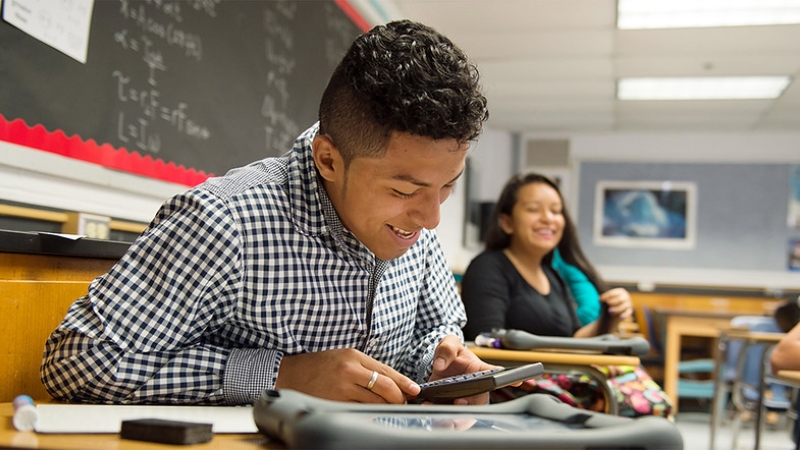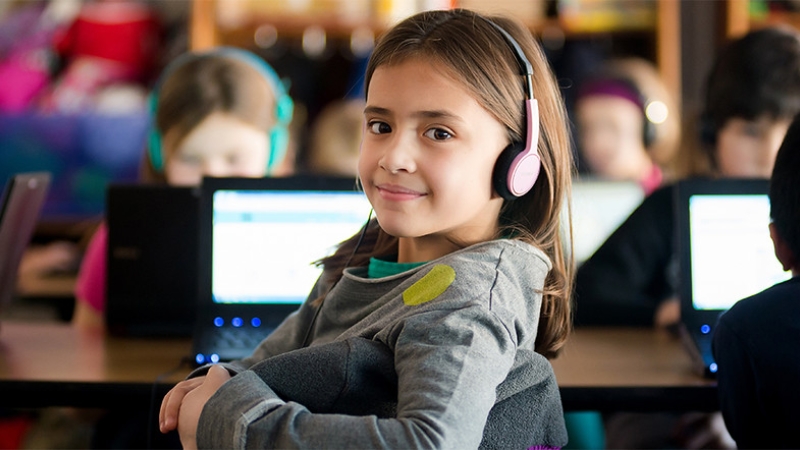
Superintendent's Weekly Reflections
Hello Team FCPS!
What an incredible holiday weekend and a strong start to September!! I trust that each of you have found time to get outdoors and enjoy nature in all its early September glory. While summer is not yet formally over, the days are certainly shortening and I have even seen a few leaves falling ;>)
Congratulations to Colleen Al Mukhtar, an ESOL teacher at Katherine Johnson Middle School, who has been accepted into the United States Institutes of Peace (USIP) 2024 Peace Teachers Program! The USIP is a national, nonpartisan, independent institute, founded by Congress and dedicated to the proposition that a world without violent conflict is possible, practical, and essential for U.S. and global security.
According to the letter announcing her acceptance into the program, “Colleen Al Mukhtar was selected because of her proven commitment to incorporating critical issues of international conflict, peace, and peacebuilding into her classroom. She is one of 26 educators from across the country, and the only teacher from Virginia selected to join this year’s cohort of Peace Teachers. USIP's Peace Teachers program is a virtual professional development opportunity for middle and high school educators who are committed to educating youth on international peace and the resolution of violent conflicts. The 2024 Peace Teachers program will take place from July 2024 to January 2025. During this time, Miss Al Mukhtar will develop a foundational understanding of the American approach to peace and discover new ways to integrate this theme into her subject area(s). Previous Peace Teachers report that following their participation in the Peace Teachers Program, their students demonstrated a deeper understanding of the complexity of global conflict and of the ways in which peace can be generated in a violent world.”
Chris Smith, principal of Katherine Johnson Middle School, says that “Colleen is the model of a lifelong learner who builds excellent relationships with students and families. She often attends the activities of students outside of school hours. We are fortunate to have her at KJMS supporting our students!” Way to go Colleen! This work matters!
This week is the official start of our new cell phone storage pilot program. At select middle schools, students will be using personal magnetic cell phone storage pouches for the duration of the school day. And at select high schools, students will be placing their cell phones into storage units at the beginning of each class. The purpose of the pilot program is to help our students spend more time learning and engaging. It will also help our teachers spend more time teaching and less time asking students to put their cell phones away. Other school districts that have gone phone-free say that their students are getting better grades and test scores, participating more in class, and personally connecting with each other more during lunch and break times. One school reported a 50% increase in attendance at sporting events and other activities, which we know is so important for the sense of belonging that keeps students engaged and regularly attending school!
It’s important to note that in case of a family emergency, parents/caregivers can contact the school’s front office. In addition, students who currently require access to a cell phone or another personally owned device for medical reasons, or an accommodation to access the curriculum and make progress to their individualized goals, will continue to have such access. Thank you to our participating schools for helping pilot this program. And thank you to all our other schools for helping our students follow our existing cell phone policy! I’m looking forward to seeing the impact we can make on student engagement, connection, and learning! You can visit our cell phone storage webpage to learn more or to share your thoughts and feedback.
Last Wednesday I attended the Fort Belvoir Community Leaders' Luncheon, where I met with Fort Belvoir leadership and local officials from the Fairfax County government. The theme of the luncheon was “Back to School,” and I was excited to share the new initiatives we have in place for this school year as well as the work FCPS is doing to support our military-connected students and families.
I also shared how our business and not-for-profit communities can help support our students through Ignite Strategic Partnerships. Ignite partnerships target eight different focus areas:
- Mentoring
- Tutoring
- Needs-based donations
- Workforce development (including STEM and STEAM)
- Arts
- Get2Green (environmental)
- Health and wellness
- Giving to Educate Fairfax
We identify the importance of having these strong relationships by including them as Pillar B of our 2023-30 Strategic Plan: Vibrant Home, School, and Community Partnerships. Partnerships focused on career readiness help bridge the gap between learning and doing, between an education and a career, by providing training and internships.
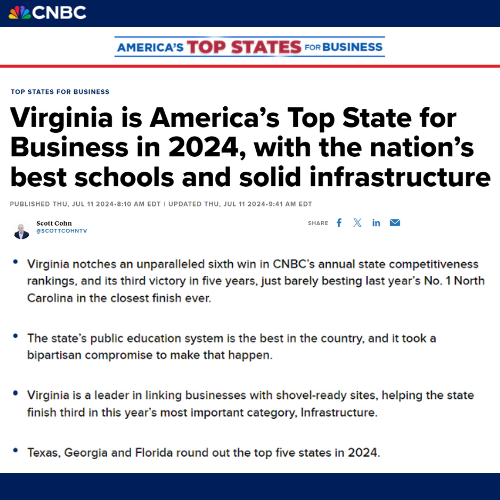
Given our robust partnerships, it’s no coincidence that Virginia recently ranked as the #1 state for business in 2024 by CNBC! The CNBC article, which you can read here, noted that having “the nation’s best schools and solid infrastructure” helps drive our region’s strong economic development. This is our sixth time being named the top state for business, and the third time within the past five years — a new record in the 17 years of CNBC’s reporting! We’re grateful to our community partners for helping ready our students for the workforce; joining together to support our young people in this way helps keep our region an economic and technological hub!
Also on Wednesday, I met with leaders from Real Food for Kids, a non-profit organization that works to change eating behaviors and improve health outcomes for children and families in the Greater Washington Region through sustainable access to real whole foods, impactful nutrition education, and local systemic policy changes. We are so excited about the menu changes and healthy food choices available to our students and staff.
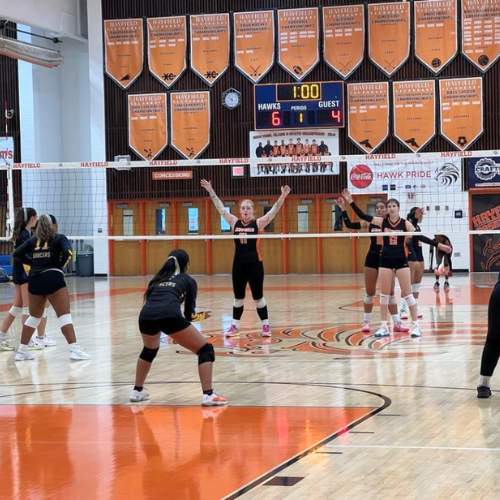
Tuesday evening, I attended the girls volleyball 🏐 game at Hayfield Secondary School, with Hayfield taking on Lewis High School. It was a well-played game with great sportsmanship. Go Hawks!! Go Lancers!! I continue to look forward to watching our FCPS student athletes as the fall season progresses.
Wednesday evening, I attended Back to School night events at two of our elementary schools. Starting with Kent Gardens ES, I enjoyed learning more about the start of the school year and all the wonderful activities happening thus far. The event was well attended and the energy was inspiring. Following the visit, I traveled to and attended the Franklin Sherman ES Back to School night activities. Learning happens best in community and we have an amazing community for which we remain grateful.
On Thursday, I met with David Young, the chief executive officer of Participate Learning, which is a group that we have worked with to bring ambassador teachers from around the world to teach in FCPS schools as part of a cultural exchange. I look forward to sharing more exciting information about this partnership in the coming weeks.
During the School Board meeting Academic Matters segment I presented information on FCPS’ annual pass rates for the Standards of Learning (SOL) and Virginia Alternate Assessment Program (VAAP) tests. As you can see in the graph below, FCPS continues to outperform the state average in all subjects. View data from the “Annual Pass Rates on SOL and VAAP Tests” graphic (below) in an accessible format.

Our students and staff have been hard at work, and we’re continuing to refine our strategies to support mastery from all our student groups through initiatives such as Universal Design for Learning, Special Education Enhancement Plan, and our new K-6 Language Arts curriculum. You can view the presentation in full here. Go Team FCPS!!
As I mentioned in last week’s Weekly Reflections, the Virginia Department of Education (VDOE) allows students to use a variety of ways to show mastery of SOL standards in writing and history/social sciences. In FCPS, we utilize this flexibility to ensure that our students engage in rigorous assessments. These alternative assessments include Advanced Placement and International Baccalaureate exams, which have higher performance standards than SOLs.
FCPS has also elected to embrace VDOE flexibility in history/social sciences to offer more authentic assessment experiences for our students, aligned with their classroom learning. As a result, Fairfax participation numbers for SOL writing and history/social sciences tests are quite small. You can read more about this approach and our expectations for a more thoughtful approach to addressing the achievement data and the data release process in this communication.
I also provided an update on FCPS’ National Merit Semifinalists. As you can see below, the FCPS class of 2024 had 264 students named National Merit Semifinalists — our highest number since 2016, even accounting for the pandemic. These students were part of the less than 1% of all U.S. high school seniors who achieved this recognition!

View data from the “National Merit Semifinalists” graphic in an accessible format.
During the Superintendent Matters segment, I recapped the strong and successful start we had to the school year last week. At each of the 17 schools I visited during the first two days of school, students and staff were excited, energized, and enthusiastic! From our transportation to custodial to administrative teams and everyone in between: your hard work was vital in getting FCPS off to a great start. Go Team FCPS!!
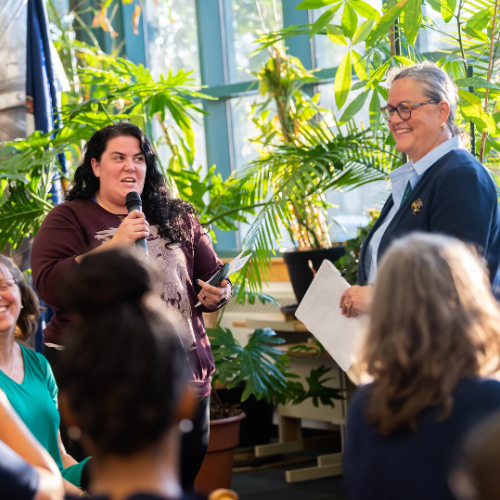
As fall gets underway, so do our Community and Employee Conversations! I can’t wait to hear everyone’s thoughts, ideas, and feedback. Click here to register for our first Employee Conversation of the season, taking place Thursday, September 5, at Bailey's Upper Elementary School from 4:30 to 5:30 p.m. Our first Community Conversation, for families and other community members, takes place on Monday, September 9, from 6:30 to 7:30 p.m. at Holmes Middle School. Although registration is not required, you can register at this link for planning purposes. See you there!
On Wednesday, August 28, the Virginia Board of Education voted to adopt edits and updates to Virginia’s Every Student Succeeds Act (ESSA) consolidated state plan to align it with Virginia’s new School Performance and Support Framework. Adoption of the ESSA plan finalizes additional details regarding concepts outlined in newly adopted revisions to the Regulations Establishing Standards for Accrediting Public Schools in Virginia (8VAC20-132), also known as the Standards of Accreditation (SOA).
The new system represents a significant and potentially concerning change in how the state will report school performance and hold schools accountable for student achievement and performance beginning in school year 2025-26, based on student outcomes during school year 2024-25. With shifts in how student academic, readiness, and graduation outcomes are measured, there is the potential for misrepresenting the overall health of FCPS schools and overidentifying schools as underperforming and needing external support.
Early modeling of the new calculations completed by Virginia Department of Education staff and contractors appear to mirror the economic make-up of the school. In other words, under the new system, it is likely that schools with a greater number of economically disadvantaged students will report weaker school performance, while schools with a smaller number of economically disadvantaged students will report stronger school performance. It is concerning that under the new system a school’s overall performance status may be determined largely by social-political factors outside our immediate control rather than on the quality of instruction and support our dedicated staff provide to all our students.
Images from July 24, 2024, VBOE Work Session, slides 21-22.


View data from the “July 24, 2024, VBOE Work Session” graphics in an accessible format
The first image is a scatter plot titled "Model Results: Growth vs. Mastery Elementary." The chart compares elementary schools based on their "Growth Index" (y-axis, ranging from 0 to 25) and "Mastery Index" (x-axis, ranging from 0 to 65).
The plot is divided into four quadrants:
- Top-left quadrant: "Higher Growth, Lower Mastery" schools.
- Top-right quadrant: "Higher Growth, Higher Mastery" schools.
- Bottom-left quadrant: "Lower Growth, Lower Mastery" schools.
- Bottom-right quadrant: "Lower Growth, Higher Mastery" schools.
Each point on the scatter plot represents an elementary school, color-coded based on the number of economically disadvantaged students (measured by the percentage of students receiving Free and Reduced-Price Lunch, or FRPL):
- Blue points: Schools with a low number of economically disadvantaged students.
- Orange points: Schools with a high number of economically disadvantaged students.
- Gray points: Schools with a medium number of economically disadvantaged students.
The graph shows a trend where schools with fewer FRPL students tend to have higher mastery scores, while those with more FRPL students generally have lower mastery scores.
To the right of the graph is a table displaying median total scores (out of 100) for the three groups:
- Schools with a low number of economically disadvantaged students: Median score of 84.5.
- Schools with a medium number of economically disadvantaged students: Median score of 77.1.
- Schools with a high number of economically disadvantaged students: Median score of 73.0.
A note at the bottom of the graph explains the categorization: "low" refers to the bottom 25% of schools, "high" refers to schools at the 75th percentile or higher, and "medium" refers to schools in between.
The second image is a scatter plot titled "Model Results: Growth vs. Mastery Middle Schools." The chart compares middle schools based on their "Growth Index" (y-axis, ranging from 0 to 20) and "Mastery Index" (x-axis, ranging from 0 to 80).
The plot is divided into four quadrants:
- Top-left quadrant: "Higher Growth, Lower Mastery" schools.
- Top-right quadrant: "Higher Growth, Higher Mastery" schools.
- Bottom-left quadrant: "Lower Growth, Lower Mastery" schools.
- Bottom-right quadrant: "Lower Growth, Higher Mastery" schools.
Each point on the scatter plot represents a middle school, color-coded based on the number of economically disadvantaged students (measured by the percentage of students receiving Free and Reduced-Price Lunch, or FRPL):
- Blue points: Schools with a low number of economically disadvantaged students.
- Orange points: Schools with a high number of economically disadvantaged students.
- Gray points: Schools with a medium number of economically disadvantaged students.
The graph shows a trend where schools with fewer FRPL students tend to have higher mastery scores, while those with more FRPL students generally have lower mastery scores.
To the right of the graph is a table displaying median total scores (out of 100) for the three groups:
- Schools with a low number of economically disadvantaged students: Median score of 81.2.
- Schools with a medium number of economically disadvantaged students: Median score of 73.5.
- Schools with a high number of economically disadvantaged students: Median score of 67.1.
A note at the bottom of the graph explains the categorization: "low" refers to the bottom 25% of schools, "high" refers to schools at the 75th percentile or higher, and "medium" refers to schools in between.
Looking ahead to the next steps for these state accountability changes:
- Amendment 7 to Virginia’s ESSA Consolidated State Plan will now be submitted to the United States Department of Education (USED) for review and approval. There is no projected timeline for when the State Board might receive word from USED on whether or not the plan is approved. It is possible that USED can request changes to the plan from VDOE, which could lead the Board to revisit previous decisions.
- The School Performance and Support Framework as updated in the Standards of Accreditation is currently in the final stage of the regulatory review process and is open for one final 30-day comment period (until September 25). Upon the close of the comment period, the regulatory changes will be final and go into effect for performance reporting beginning in 2025-26, based on students outcomes during the current 2024-25 school year.
Looking ahead to the next steps for these state accountability changes:
- Amendment 7 to Virginia’s ESSA Consolidated State Plan will now be submitted to the United States Department of Education (USED) for review and approval. There is no projected timeline for when the State Board might receive word from USED on whether or not the plan is approved. It is possible that USED can request changes to the plan from VDOE, which could lead the Board to revisit previous decisions.
- The School Performance and Support Framework as updated in the Standards of Accreditation is currently in the final stage of the regulatory review process and is open for one final 30-day comment period (until September 25). Upon the close of the comment period, the regulatory changes will be final and go into effect for performance reporting beginning in 2025-26, based on students outcomes during the current 2024-25 school year.
Even after the final adoption of the Standards of Accreditation and the ESSA plan, additional details on exactly how the accountability system will calculate school performance will need to be finalized by the State Board and Department within the parameters set by the SOA and ESSA plan. This includes details regarding how the components of the 3E’s high school readiness model will be aggregated and updates to the Memorandum of Understanding that may impact school divisions with high concentrations of newly defined underperforming schools. We will continue to monitor these changes in the coming weeks and months and share how we will address the new narrative(s).
As we begin another school year, I know that together, we will overcome any challenges before us and celebrate each other’s commitment and caring for this great community! As I was recently reviewing the stories of those who have overcome challenges, I was reminded by Michael Jordan that “Some people want it to happen, some wish it would happen, others make it happen.” In our inimitable FCPS way, I am looking forward to making many amazing things happen in the coming weeks and months; knowing that together, all things are possible…
All the best and take good care,
Michelle Reid, Ed.D.
Superintendent
Fairfax County Public Schools



